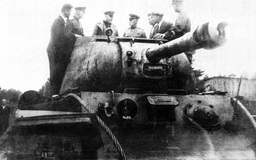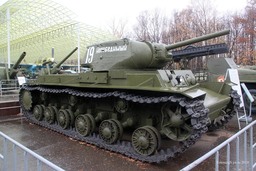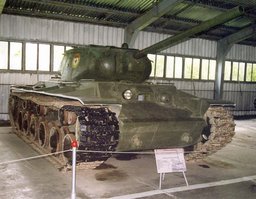KV-1S
KV-1S
In response to criticisms, the lighter KV-1S was released, with thinner armour and a smaller, lower turret in order to reclaim some speed. Importantly, the KV-1S had a commander's cupola with all-around vision blocks. It also had a sophisticated planetary transmission that significantly increased the reliability, and allowed use of more efficient regenerative geared steering, unlike the solely clutch and brake steering systems used by the Panzer III, IV and T-34. Its reduced weight allowed it to achieve a top speed of 43.3 km/h. Over 1,300 were built before production ended in August 1943. Although KV-1S was the best of the mass-produced KV tanks, overcoming its predecessors problems, more modern tanks were already in sight. Up-arming the regular turret of the KV-1S with an 85 mm S-31 resulted in the KV-1S-85 or KV-85G. This was rejected as it came with the unacceptable loss of a dedicated commander, reducing the turret crew to two. However, the thinning-out of the armour called into question why the tank was being produced at all, when the T-34 could seemingly do everything the KV could do and much more cheaply. The Soviet heavy tank program was close to cancellation in mid-1943.
The appearance of the German Panther tank in the summer of 1943 convinced the Red Army to make a serious upgrade of its tank force for the first time since 1941. Soviet tanks needed bigger guns to take on the growing numbers of Panthers and the few Tigers.

The appearance of the German Panther tank in the summer of 1943 convinced the Red Army to make a serious upgrade of its tank force for the first time since 1941. Soviet tanks needed bigger guns to take on the growing numbers of Panthers and the few Tigers.




